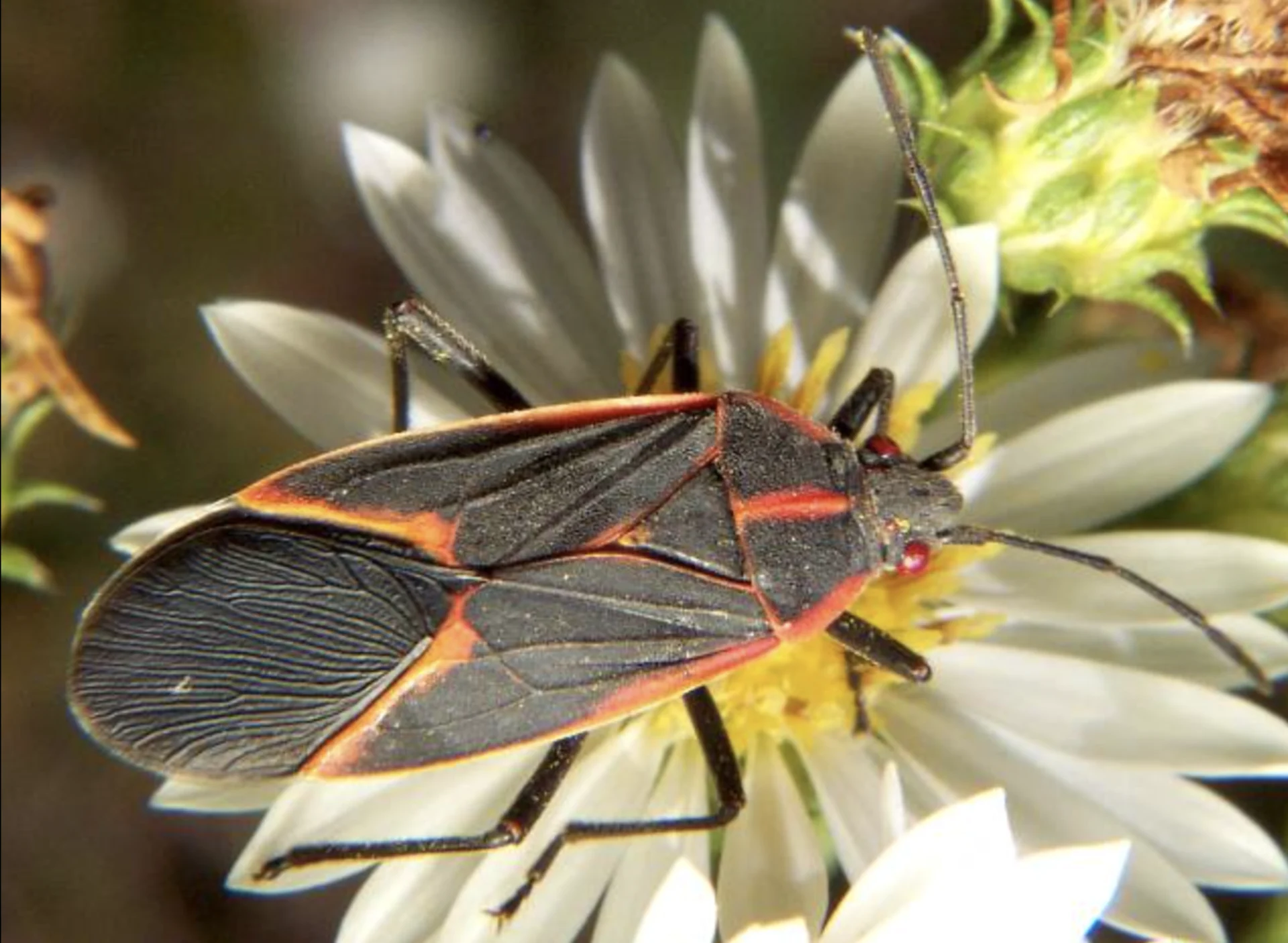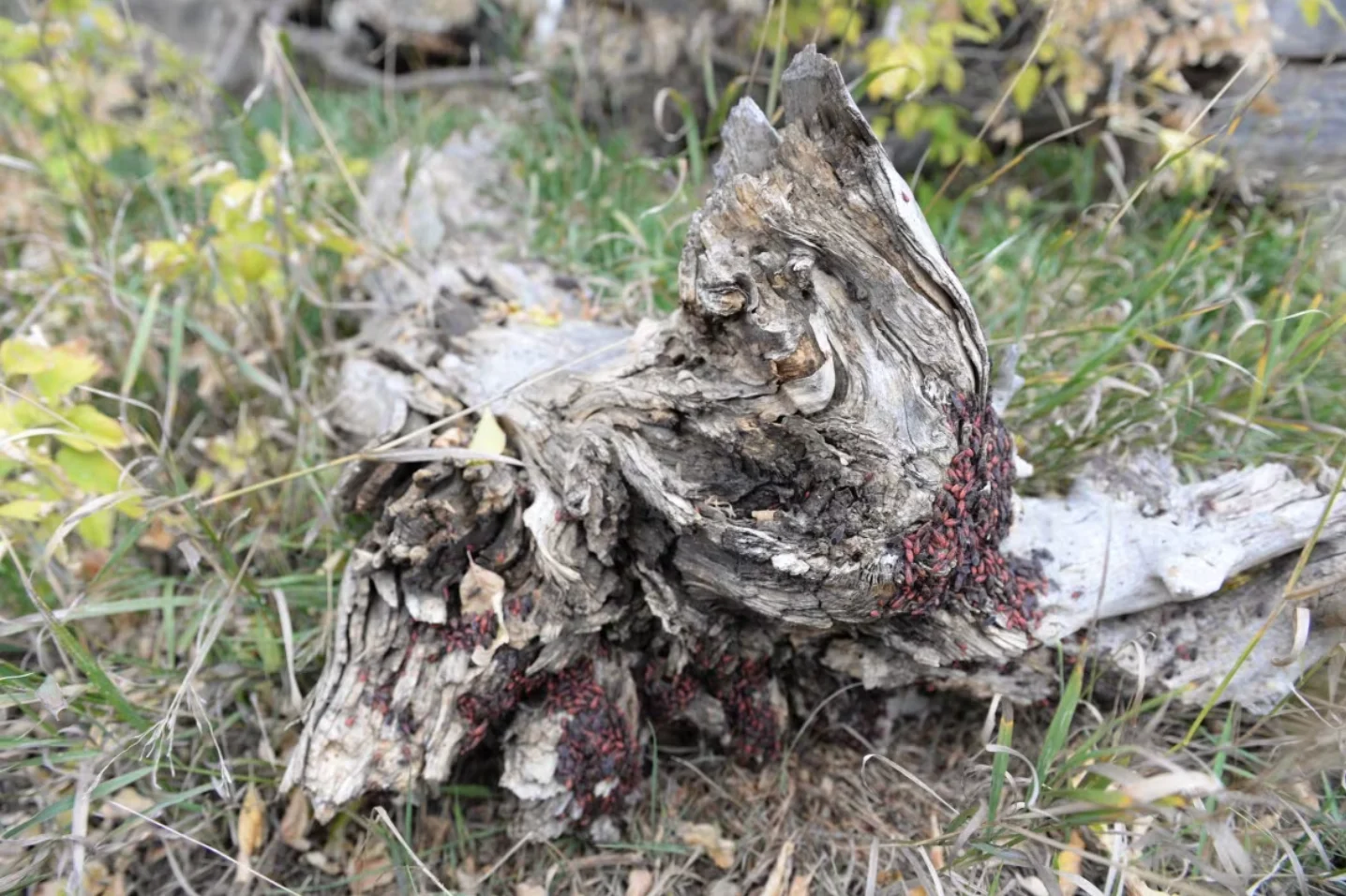
Battle of the boxelder bugs: what to do when the stinky houseguests move in
Okay, maybe you didn't invite these bugs inside — but when the weather cools down, inside beckons to boxelder bugs. And, if they can find a way to, they'll squeak through any space to escape the chill.
At best the maple bug, as it is also known, is a nuisance. One expert says they're not a pest, not invasive — but great at invading.
And if you see one, there might be a lot more around.
"Like, they just keep coming up, I don't know, they're gross, they're coming in from somewhere," says Marianne Cunningham. Her elderly mother has been spotting them in her care home; getting up to swat and kill the ones that she can see crawling around.
SEE ALSO: Caribou recovery program at Jasper National Park aims to boost herd numbers

Boxelder bugs are known to pile together for a group sunning session, that can be a good time to deal with the annoying insect. (Helen Pike/CBC)
Social media is lighting up with these bugs in Calgary and across the country. Some are familiar with them and see them every fall, others have never seen a boxelder bug and swear this year the insect is more prevalent.
Kate Materie identifies as a "big bug guy" — looking out for insects all the time. So seeing a boxelder for the first time, and then noticing them everywhere, seemed odd.
"Where did these come from, you know?" Materie said. "Maybe I just didn't pay attention before."
Ken Fry, an entomologist at Olds College, said these bugs aren't new. They are native to the landscape.
He says there could be an explanation for this year's bumper crop: a side-effect of this dry and hot summer.
"Their developmental rates are quicker," Fry said. "You could have more generations because they'd reach adulthood sooner and then they might have the chance to have eggs that hatch."
RELATED: Those annoying little fruit flies are heading indoors at this time of year
More generations in a summer season will mean more generations around to reproduce.
"Insects don't just have one or two kids, they have a couple hundred, a couple thousand," Fry said. "Their numbers can build up within two or three years very, very quickly from, oh, I've never seen these, to all of a sudden, my goodness, we're being overrun."
Boxelders feed on tree seeds. They have their favourites and namesakes: boxelder and Manitoba maple trees, but are also known to chow down on some ash.
Experts have already reported trees had a stressful summer, with hot and dry conditions driving leaves to yellow sooner than normal.
"If their response is to produce a large seed set, then there's an abundance of food for the boxelder bugs and they will exploit that," Fry said.
Ok, but are these good or bad bugs?
The big picture on these black and red bugs is that they don't hurt the trees, they can't damage homes like other pests, and they don't carry diseases. But inside your house, the bugs can make a mess if you squash one, or if one poops on your carpet.
Oh — and if you threaten them, boxelders don't put up a fight, they emit a smell.
"I guess, you know, just having hundreds if not thousands of insects in your house might be a bit unsettling too, and that's understandable," Fry said.
How do you deal with an army of insects?
The insects can be a good reminder to check a home's weatherstripping, and the areas where utilities come into the home — because if these bugs can get in, other insects can too.
Here are Fry's recommendations on how to deal with them if they are already inside:
Collect them with a broom and dustpan, or vacuum.
Humanely put them down by sticking them in a freezer.
Release them outside, but know they could come crawling back in.
If the insects are congregating in a yard they are especially easy to collect and deal with on a hot day — boxelder bugs are professional sun-tanners and like to pile up by the hundreds on fence posts and stumps. Fry said a shop vac works and then, like the inside bugs, treat them to an eternal snooze in the freezer.
Pesticides may work temporarily, he said, but the maple bugs are resilient. So outside, spraying will kill off beneficial overwintering insects like bees, and inside, it might take an unsafe amount to manage an infestation.
Home remedies, Fry said, like spraying the bugs with soap or essential oils, might work, but they aren't tested and regulated like off-the-shelf pesticides.
"So you'd have to hit them repeatedly, like I'm saying, day after day with soapy water … You'd have to like hose them down kind of thing," he said. "There's one extreme thing you could do and that is cut down your boxelder tree, cut down your ash tree," Fry said. "We don't recommend that."
This article, written by Helen Pike, was originally published for CBC News.
LEARN MORE: What are 'stink bugs' and why are these pests invading your home and Canada?
Header image credit: Bruce Marlin/Wikipedia/CC by SA-2.5









